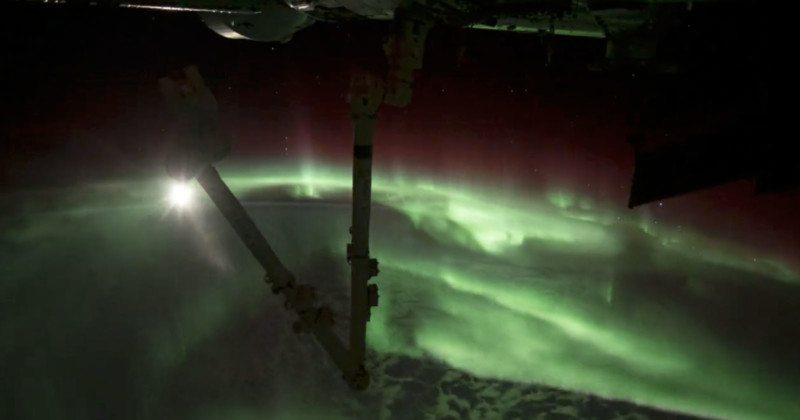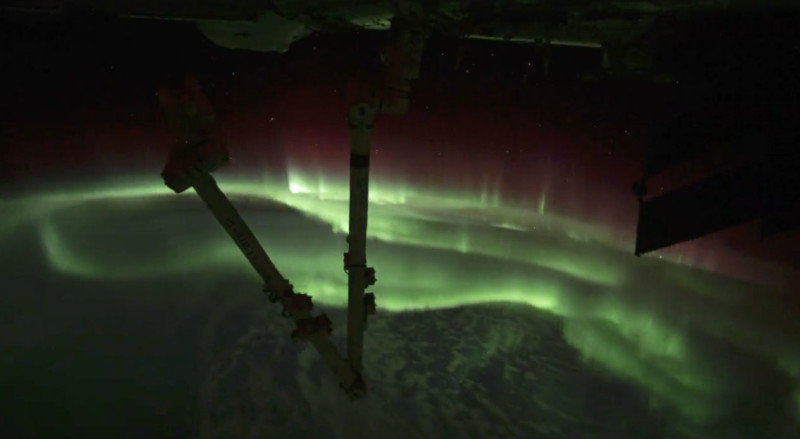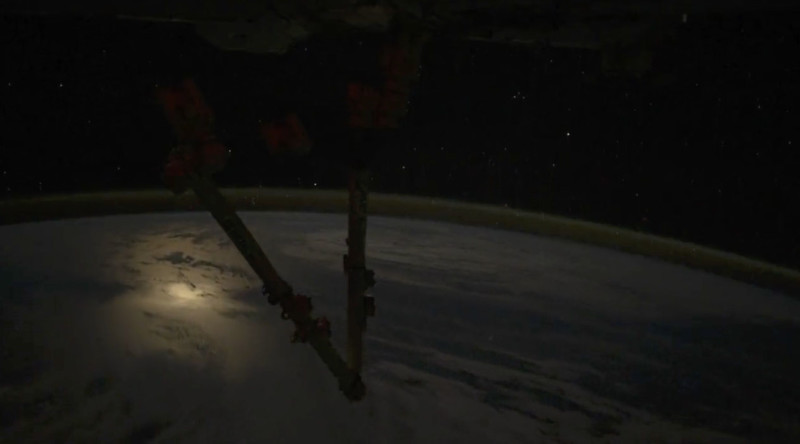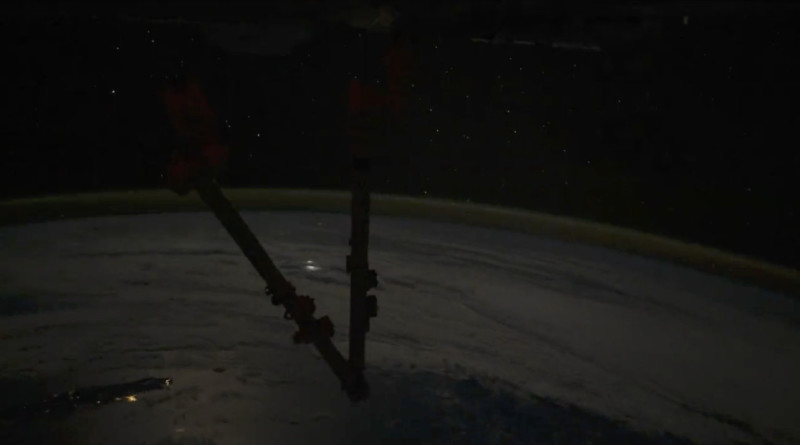Orbital Pass Video From ISS Shows Aurora, Moonrise, and Lightning

A recent timelapse video published by the International Space Station’s (ISS) Twitter account shows an incredible orbital pass over a huge chunk of Oceania taking in the dancing aurora lights, a spectacular moonrise, and a lightning storm.
The amazing orbital pass starts above the Southern Indian Ocean where the aurora australis are shining and swirling brightly in its trademark green hue above the Earth’s atmosphere.
This time-lapse video shows an orbital pass above an aurora-draped Indian Ocean all the way to a moonlit Coral Sea east of Australia. pic.twitter.com/U5pGdtdRvD
— International Space Station (@Space_Station) September 5, 2022
The aurora light continues to stream in all across the picture as a dazzling moon begins to rise behind the Canadarm2 robotic arm that is attached to the ISS and above the horizon.
As the moon disappears from view the Orion constellation comes into the frame and shortly after the bright moonlight glistens across the surface of the Coral Sea which is east of Australia and 268 miles below the ISS.


In case the viewers have not had enough natural phenomena, the video then captures a few strikes of lightning followed by a view of the atmospheric glow that blankets the Earth.
The NASA video has the accompanying caption: “This time-lapse video shows an orbital pass above the aurora-draped Indian Ocean all the way to a moonlit Coral Sea east of Australia.:”
“Every stargazer’s dream place. Amazing view of our universe from the ISS,” wrote one commenter.
“Our planet has so many amazing natural phenomena that occur. These sights are breathtaking if you are fortunate enough to get to see them,” adds Brad Fuller.

The video was published on September 5 and it is not clear exactly when it was filmed or how long a period the timelapse was filmed over.
Auroras occur when particles from incoming solar storms strike gases in our planet’s atmosphere. Earth’s magnetic poles attract the charged particles and the collision often leads to these eye-catching displays.
While astronauts on the space station do get a unique view of the phenomenon, the natural wonder can also be witnessed from the ground, with the best vantage points in places in the far north like Alaska, Canada, Iceland, Greenland, Norway, Sweden, and Finland.
The has been a recent increase in activity from the sun as a result of it coming toward the most active phase in its 11-year solar cycle — hitting peak activity in 2024.
Studies have shown that the level of solar activity currently happening, is about the same as it was 11 years ago, during the same point in the last cycle.
Image credits: All photos by NASA.